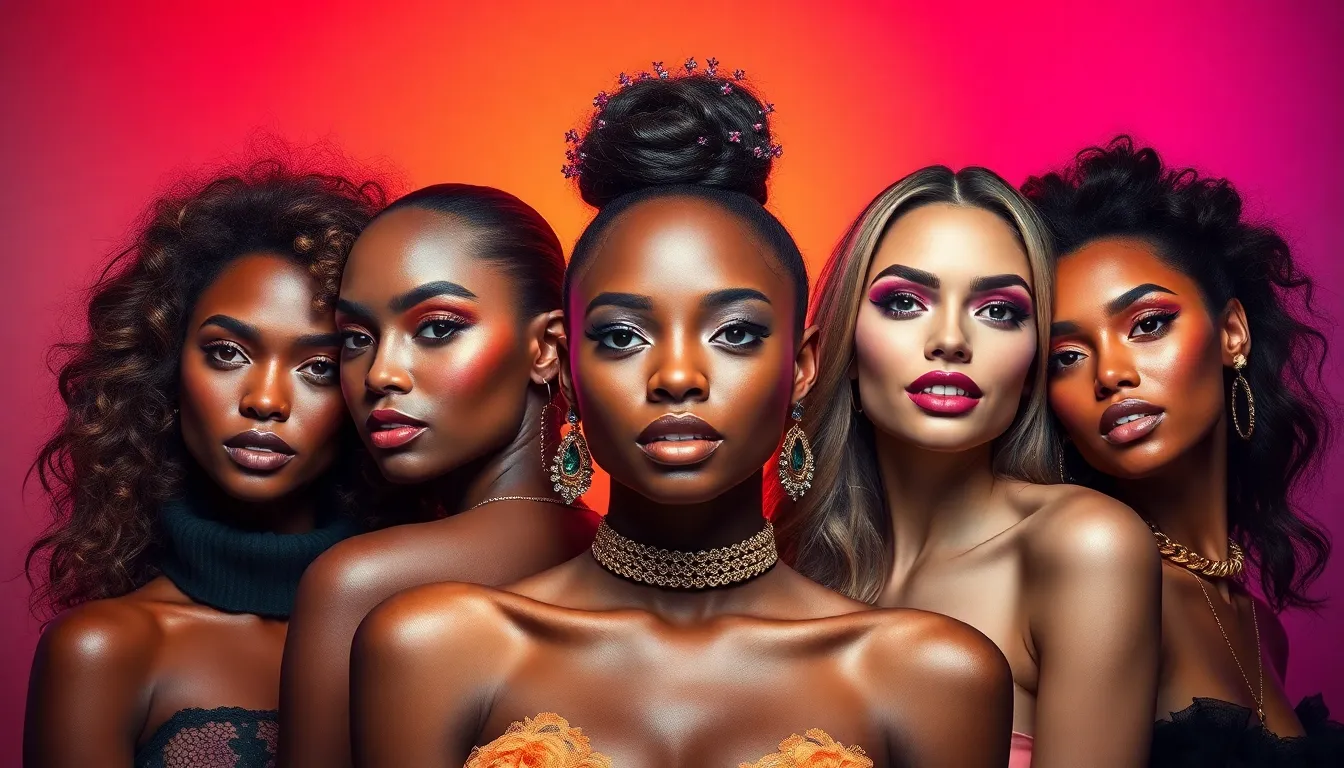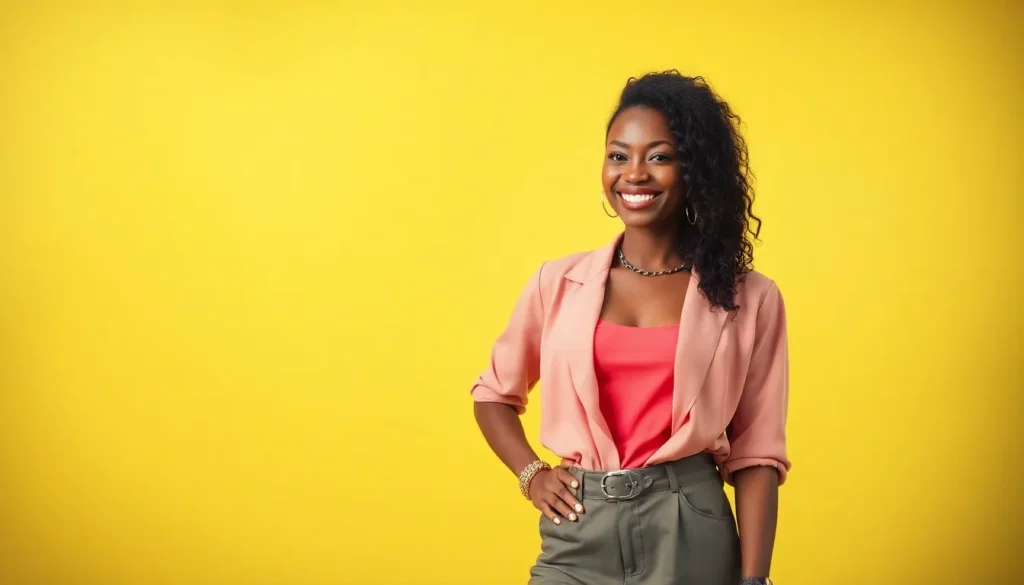Beauty magazine covers have long been the gateway to the glamorous world of fashion and self-expression, captivating readers with their stunning visuals and aspirational messages. They’re not just pretty pictures; they’re a blend of art, marketing, and a sprinkle of magic that promises to transform the everyday into the extraordinary. Who doesn’t want to channel their inner supermodel while sipping coffee in their pajamas?
These covers do more than showcase the latest trends; they set the stage for cultural conversations about beauty standards, self-acceptance, and everything in between. With each turn of the page, readers dive into a treasure trove of tips, tricks, and inspiration that can make even the most mundane day feel like a runway moment. So, let’s peel back the layers and explore what makes these covers not just eye candy but a powerful influence in the beauty industry.
Table of Contents
ToggleThe Evolution Of Beauty Magazine Covers
Beauty magazine covers have transformed significantly over time, reflecting changing societal norms and evolving beauty standards. Each decade introduces unique styles and messages, contributing to the overall narrative of beauty and self-acceptance.
Historical Trends
Historical trends in beauty magazine covers reveal how aesthetics shift alongside cultural movements. In the early 20th century, covers focused on idealized femininity, showcasing women in elaborate clothing and glamorous settings. The 1960s introduced a more diverse representation, celebrating youth and individuality with minimalistic designs. The 1980s saw bold colors and dramatic imagery, emphasizing confidence and empowerment. Recent years emphasize inclusivity, highlighting diverse models and redefining beauty standards. These trends clearly show how beauty magazines adapt to societal expectations and promote various ideals.
Iconic Covers Through The Decades
Iconic covers have left a lasting impact on the beauty industry over the decades. Vogue’s 1974 cover featuring a young Lauren Hutton showcased natural beauty and minimal makeup, resonating with a generation. In 1990, the cover featuring Naomi Campbell marked a turning point in representation, breaking barriers for black models in mainstream fashion. The 2000s brought the celebrated cover with Michelle Obama, symbolizing empowerment and diversity. Recently, the cover featuring Lizzo celebrated body positivity, echoing the ongoing conversation around self-love. Each iconic cover not only reflects the trends of its time but also pushes the boundaries of beauty norms and cultural conversations.
Elements Of A Successful Cover

Successful beauty magazine covers feature various elements that collectively draw readers’ attention. Each element plays a crucial role in conveying the magazine’s message and aesthetic.
Color Usage
Color usage significantly influences a cover’s appeal. Bright, bold colors attract attention, while softer hues evoke feelings of calmness. Strategically chosen palettes enhance the magazine’s theme and resonate with target audiences. Recent trends emphasize diverse skin tones alongside vibrant backdrops, ensuring inclusivity and wider representation. Cover designs often use contrasting colors to create visual interest and highlight key features.
Typography Choices
Typography choices add personality to magazine covers. Fonts can range from elegant serif styles to modern sans-serif designs, reflecting the magazine’s overall vibe. Well-selected typography enhances readability and establishes a visual hierarchy, making essential text stand out. Utilizing bold headlines alongside smaller subtitles often guides readers’ focus. Signature fonts can also create brand identity, making the magazine instantly recognizable on shelves.
Imagery and Photography
Imagery and photography play a pivotal role in cover design. High-quality, engaging visuals capture attention and convey a story instantly. Featuring diverse models offers representation to a broader audience, supporting the magazine’s message of inclusion. Photographic techniques, such as creative angles and effective lighting, enhance the overall impact of the image. Additionally, well-composed images with striking backgrounds can create a memorable aesthetic, compelling readers to explore further.
Cultural Impact Of Beauty Magazine Covers
Beauty magazine covers significantly shape cultural perceptions, influencing public discourse on representation and beauty ideals. They reflect and challenge societal trends, ultimately affecting self-image and identity.
Representation and Diversity
Representation in beauty magazine covers has evolved dramatically. Earlier covers predominantly showcased Eurocentric beauty, whereas contemporary covers increasingly feature diverse models. This shift allows individuals from various backgrounds to see themselves represented. Magazines now often highlight body positivity, gender fluidity, and cultural variations. Notably, campaigns featuring models of different sizes, ethnicities, and ages empower readers. Each portrayal reinforces the message that beauty is not confined to traditional standards, promoting acceptance across various demographics.
Influence on Beauty Standards
Beauty magazine covers play a crucial role in defining and reshaping beauty standards. They establish trends, setting ideals that often influence consumer behavior. Historic covers, such as Naomi Campbell’s iconic presence in the 1990s, challenged narrow beauty norms. Modern covers continue this trend by embracing imperfections, redefining what beauty encompasses. Readers now engage with content that celebrates uniqueness rather than conformity. Each cover has the potential to create a cultural dialogue, affecting individuals’ self-esteem and perceptions of their beauty. This ongoing influence reinforces the idea that beauty is diverse and ever-changing.
Case Studies Of Notable Beauty Magazine Covers
Beauty magazine covers exemplify the intersection of art and cultural dialogue. Many covers not only highlight trends but also challenge societal norms around beauty.
Vogue’s Impactful Covers
Vogue consistently sets the standard for beauty magazine covers. The iconic 1974 cover featuring Lauren Hutton marked a pivotal moment, showcasing natural beauty alongside the high fashion of the era. Naomi Campbell’s groundbreaking 1990 cover broke barriers by featuring a Black model in a prominent fashion space, pushing diversity into the spotlight. Michelle Obama’s powerful 2009 cover redefined beauty for an entire generation, symbolizing empowerment and progress. Recent covers, featuring models of all shapes, sizes, and backgrounds, celebrate inclusivity, reflecting contemporary values and conversations about beauty.
Elle’s Trendsetting Aesthetics
Elle has also made significant contributions to beauty magazine covers. The publication often blends vibrant colors with striking photography, making each cover a distinctive visual statement. In the early 2000s, covers showcasing celebrities highlighted their personal styles and captured industry trends seamlessly. The focus on diverse representations began around this time, inviting a broader audience into beauty discussions. Notable covers featuring various ethnicities fostered a sense of belonging and acceptance. Elle’s commitment to trendsetting aesthetics reinforces the idea that beauty encompasses more than conventional standards.
The Future Of Beauty Magazine Covers
Beauty magazine covers are evolving rapidly, driven by technological advances and shifting consumer values. These changes create new opportunities for engagement and connection.
Digital Transformation
Digital transformation reshapes the landscape of beauty magazine covers significantly. Augmented reality features enhance user interaction by allowing readers to visualize makeup looks or hairstyles through their devices. Additionally, social media platforms become integral in promoting cover launches, fostering real-time discussions and broader reach. Data analytics provide insights into consumer preferences, enabling magazines to tailor content and design for specific audiences. Furthermore, animated covers capture attention, blending traditional elements with dynamic visuals, creating an immersive experience for readers.
Sustainability In Design
Sustainability in design becomes a focal point for future beauty magazine covers. Eco-friendly materials and practices prioritize environmental consciousness in publishing. Many magazines adopt recyclable papers and plant-based inks, reducing their carbon footprint. Cover designs may emphasize natural beauty and ethical brands, showcasing products that are cruelty-free and sustainably sourced. Collaborations with eco-conscious designers highlight the shift toward responsible aesthetics. Emphasizing these values resonates with increasingly eco-aware audiences, encouraging readers to support brands committed to positive change.
Beauty magazine covers continue to serve as powerful reflections of societal values and evolving beauty standards. They inspire readers to embrace their uniqueness while fostering important conversations about representation and self-acceptance. As the industry adapts to technological advancements and shifts in consumer expectations, these covers remain a vital part of cultural dialogue.
The future promises even more innovation in design and content, ensuring that beauty magazines stay relevant and impactful. By celebrating diversity and promoting sustainable practices, they not only influence trends but also empower individuals to redefine their understanding of beauty. The journey of beauty magazine covers is far from over; it’s a dynamic narrative that will keep evolving, encouraging everyone to find their place in the ever-changing landscape of beauty.

